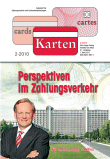Following the introduction of euro notes and coins in 2002 the political drivers of the Sepa process - the Economic and Financial Affairs Council (Ecofin), the European Commission, the European Parliament and the European Central Bank called on the banking industry to develop a set of harmonised schemes and frameworks for electronic euro payments. Sepa (short for Single Euro Payments Area) covers 32 countries: the 27 EU Member States, Iceland, Liechtenstein, Norway, Switzerland and Monaco.
Sepa holds significant benefits for bank customers. The implementation of innovative and competitive Sepa payment services and products based on global ISO standards offered by banks translates into efficiency gains for businesses and public administrations, while consumers can rely on a single set of euro payment instruments covering 32 countries. The creation of a Sepa for Cards will ensure a consistent customer experience when making or accepting payments with cards.
The European payments industry represented by the European Payments Council (EPC) supports the Sepa vision and has developed the necessary harmonised payment schemes and standards.1)
Now that the banking industry implemented the Sepa infrastructure envisioned by the European authorities, the next item on the agenda is to set an end date for migration to the new Sepa payment instruments.
Setting a deadline for migration to Sepa: the view of Ecofin, ...
On 2 December 2009, the Ecofin (Economic and Financial Affairs Council comprising the Economics and Finance Ministers of the EU Member States) concluded that "establishing definitive enddates for migration [to Sepa Credit Transfer and Sepa Direct Debit] would provide the clarity and the incentive needed by the market, ensuring that the substantial benefits of Sepa are rapidly achieved and that the high costs of running both legacy and Sepa products in parallel can be eliminated".
The Ecofin asked that the European Commission, in collaboration with the ECB and other actors concerned, assess the need to set a binding end date separately with regard to each Sepa Scheme, taking into account specific preconditions of Member States (for example euro zone versus noneuro zone Member States). Moreover, specific needs and interests of end consumers would have to be considered. Finally, different possibilities for setting an end date should be demonstrated, each with its advantages and disadvantages (for example EU-regulation, ECB-regulation, national measures). The market is now awaiting the results of this assessment.
... EPC ...
The EPC recognises the value of setting a deadline for migration to Sepa services. An end date for phasing out legacy euro payment instruments
creates awareness, ensures planning security for all mar ket participants
and confirms the commitment to making Sepa a reality.
... and European Central Bank
This view is shared by the European Central Bank as well as the European Parliament. The latter already in March 2009 called on the European Commission to set a "clear, appropriate and binding end date, which date should not be later than 31 December 2012, for migrating to Sepa products".2) In the view of the EPC, mandating an EU-wide end date would require EU regulation.
In December 2009, the Ecofin also reiterated the importance of and its "support for the full realisation" of Sepa, which, in the words of the Ecofin, aims at achieving "an integrated and competitive internal market for euro payments for the benefit of citizens and businesses". In addition, the Ecofin expressed its regrets about the fact that almost two years after the successful technical launch of the Sepa Credit Transfer (SCT), the percentage of credit transfers in the euro area processed using the new SCT format remains very low and is mostly limited to cross border payments. The Ecofin "considers it crucial to accelerate the take up of Sepa Credit Tansfers, especially for national euro payments traffic".
Sepa is not designed as a demand-driven process
According to the Sepa Indicators compiled by the European Central Bank (ECB), the share of Sepa Credit Transfers (SCT) as a percentage of the total volume of credit transfers generated by bank customers amounts to 6.2 per cent as of January 2010.3) The current rate of Sepa market uptake comes as no surprise.
Sepa was not started nor is it designed as a demand-driven process. Bank customers did not ask for the introduction of the euro or for current euro payment instruments to be replaced. Existing payment services are generally viewed to be efficient, secure and cheap. Sepa is an EU integration initiative and the progress of roll-out reflects the average timelines required for the implementation of other such major programmes.
Political leadership has to materialise now
However, the data available also clearly indicate that political leadership is required now to ensure successful completion of the process. The Sepa programme is driven forward jointly by the public and the private sectors. The banking industry cooperating in the EPC has delivered its part. The European legislator has put in place the Payment Services Directive (PSD) which establishes the common legal framework required to achieve Sepa. It is now time for the public sector to take the next step.
The public authorities that asked for Sepa should create the clarity and incentives needed to facilitate the migration of customers to the new Sepa payment instruments as requested by the Ecofin. To make it absolutely clear: no end date, no Sepa.
A transformation process of this dimension has to be transparent and predictable. A binding end date established through EU Regulation would provide such predictability. Any other conclusion would severely misinterpret the situation. It is now up to the political authorities, in par ticular the national governments represented in the Ecofin, to make the necessary calls.
Annotations
1 Anmerkungen For detailed information on the EPC deliverables visit the EPC web site at www.europeanpaymentscouncil.eu
2 European Parliament. Resolution on the implementation of the Single Euro Payments Area (Sepa). 11 March 2009.
3 http://www.ecb.eu/paym/sepa/timeline/use/html/index. en.html.
